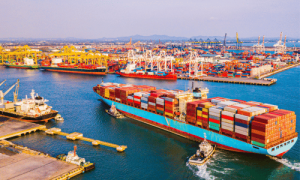Future Indonesian food demand: driven by products such as fruit, dairy and red meat
Analysis by the Australian Bureau of Agricultural and Resource Economics and Sciences (ABARES 2021) has found that future Indonesian food demand will be driven by increased consumption of higher-value food products such as fruit, vegetables, dairy and red meat.
ABARES expects the value of Indonesian food consumption to quadruple by 2050. Most of this increase is likely to be met by imported products. Australia is well placed to meet Indonesia’s growing food demand due to its close trade ties and geographical proximity.
Implications for Australian exporters
Despite ongoing regulatory complexity, fundamental trends in the Indonesian economy will continue to create opportunities for Australian agricultural exporters. These trends include rising incomes and urbanisation.
Population growth, higher incomes and urbanisation to drive Indonesian food demand
Indonesia is one of Australia’s most valuable agricultural markets. Key exports include wheat, live cattle, red meat, dairy products, offal, cotton and table grapes.
Indonesia’s growing population is young, increasingly wealthy, and rapidly urbanising. This will drive Indonesia’s future food demand and change the way Indonesians buy food.
- Larger populations need more food, supporting increased overall food demand.
- Higher incomes mean consumers can afford to buy more expensive and diverse foods (particularly meat, dairy, and fresh fruit and vegetables).
- Young people are more likely to use smartphones and food delivery apps. This will support demand for ready-made and prepared meals.
- Urbanisation has wide-ranging implications, including increasing the amount of food bought at supermarkets and hypermarkets. These retailers often offer better opportunities for importers than more traditional ‘wet’ markets (USDA 2021).
ABARES forecasts sharp rises in the consumption value of the following foods over the coming decades:
- red meat (+1,321%)
- dairy (+935%)
- sugar (+552%)
- fruit (+269%).
Consumption of staple products, such as wheat and rice, is also expected to increase, but at a slower rate.
Substantial increases in the consumption of higher-value food commodities have been observed since 1990. Between 1990 and 2018, Indonesians increased their daily consumption of dairy, meat, fruits, vegetables and seafood (Figure 1).
Figure 1: Per capita consumption of selected food products in Indonesia, 1990 vs. 2018

Outlook for food exports to Indonesia
Food demand in Indonesia is likely to increase at a faster rate than domestic production. As a result, most of Indonesia’s increasing food demand is expected to be met by increased imports.
Indonesia’s regulatory environment can be challenging for exporters to navigate. Regulatory complexity and a policy preference for self-sufficiency have restricted some food imports. This is particularly the case since Indonesia introduced the Food Law in 2012.
Recent trade agreements, including the Indonesia-Australia Comprehensive Economic Partnership Agreement (IA-CEPA), have made the Indonesian market more accessible for some Australian agricultural commodities.
The Australian Government recently launched the Blueprint for trade and investment with Indonesia. The Blueprint aims to help business take advantage of the opportunities offered by IA-CEPA.




















